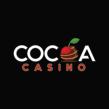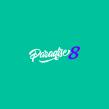Mastering Blackjack: A Complete Guide
Interested Casinos
Rules
Bad gambling advice often circulates in casinos, like the misconception that the goal of blackjack is merely to get close to 21 without going over, when in reality, the objective is to beat the dealer by not busting and outscoring them or causing them to bust.
- Blackjack can be played with 1 to 8 decks.
- Aces can be counted as 1 or 11, 2 to 9 as per pip value, and tens/face cards as 10 points.
- The highest hand is a “blackjack,” consisting of an ace and any 10-point card.
- Players receive two cards each; one face up, one face down (the “hole card”).
- Insurance is offered if the dealer’s face-up card is an ace; it pays 2 to 1 if the hole card is a 10-point card.
- If the dealer shows a ten or an ace, they check for blackjack; if they have one, all wagers (except insurance) lose unless the player also has a blackjack.
- Play starts left of the dealer; options include stand, hit, double, split, or surrender (if allowed).
- The dealer draws cards until reaching 16 or less; soft 17s may vary by table.
- Players win if the dealer exceeds 21 points and they haven’t busted.
Wizard’s Basic Approach
I’ve long emphasized the importance of mastering basic blackjack strategy, but I’ve found that few are willing to commit it to memory. In “Gambling 102,” I introduced a simpler approach with just seven rules, minimizing errors to 0.53% under Vegas Strip rules. However, I felt this was still too high, leading me to develop the “Wizard’s Strategy” in September 2009. With just 21 rules, it reduces errors to a mere 0.14%—equivalent to one mistake every 12 hours of play. It’s crucial to understand that while effective, this strategy isn’t foolproof; occasional corrections may be necessary, highlighting the importance of using the appropriate basic strategy for the specific game rules.
Watch out for blackjack payouts.
Watch out for reduced blackjack payouts, increasingly common with some tables paying 6 to 5 or even money instead of the traditional 3 to 2. Around 10% of Las Vegas tables now offer these lower payouts. To uphold the true essence of “blackjack,” insist on tables that pay 3 to 2, distinguishing them from other “21” variants like Super Fun 21 and Spanish 21. Always confirm the payout on the felt or look for signage; if uncertain, inquire to ensure you’re getting the best odds.
Bad Approach
At the blackjack table, three common yet detrimental strategies are “never bust,” “mimic the dealer,” and “assume the dealer has a ten in the hole.” Each carries significant flaws. “Never bust” entails never hitting a hard 12 or higher, resulting in a high house edge of 3.91%. “Mimic the dealer” involves always hitting 16 or less and standing on 17 or more, leading to a steep house edge of 5.48%. “Assume a ten in the hole” strategy assumes the dealer holds a 10, yielding a staggering house edge of 10.03%. These strategies overlook basic blackjack principles, emphasizing the importance of adhering to proper basic strategy for favorable outcomes.




